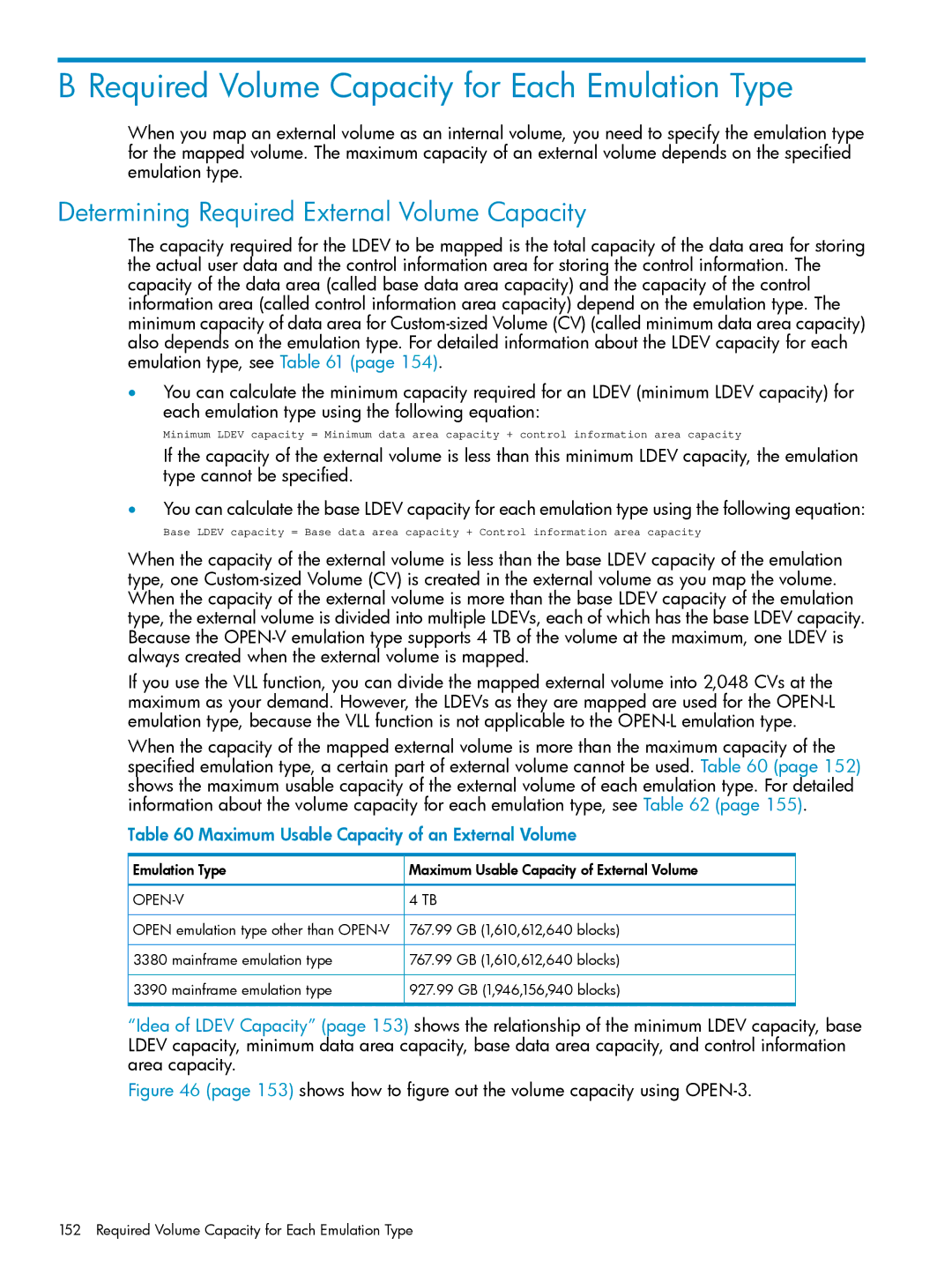
B Required Volume Capacity for Each Emulation Type
When you map an external volume as an internal volume, you need to specify the emulation type for the mapped volume. The maximum capacity of an external volume depends on the specified emulation type.
Determining Required External Volume Capacity
The capacity required for the LDEV to be mapped is the total capacity of the data area for storing the actual user data and the control information area for storing the control information. The capacity of the data area (called base data area capacity) and the capacity of the control information area (called control information area capacity) depend on the emulation type. The minimum capacity of data area for
•You can calculate the minimum capacity required for an LDEV (minimum LDEV capacity) for each emulation type using the following equation:
Minimum LDEV capacity = Minimum data area capacity + control information area capacity
If the capacity of the external volume is less than this minimum LDEV capacity, the emulation type cannot be specified.
•You can calculate the base LDEV capacity for each emulation type using the following equation:
Base LDEV capacity = Base data area capacity + Control information area capacity
When the capacity of the external volume is less than the base LDEV capacity of the emulation type, one
If you use the VLL function, you can divide the mapped external volume into 2,048 CVs at the maximum as your demand. However, the LDEVs as they are mapped are used for the
When the capacity of the mapped external volume is more than the maximum capacity of the specified emulation type, a certain part of external volume cannot be used. Table 60 (page 152) shows the maximum usable capacity of the external volume of each emulation type. For detailed information about the volume capacity for each emulation type, see Table 62 (page 155).
Table 60 Maximum Usable Capacity of an External Volume
Emulation Type | Maximum Usable Capacity of External Volume |
| 4 TB |
OPEN emulation type other than | 767.99 GB (1,610,612,640 blocks) |
3380 mainframe emulation type | 767.99 GB (1,610,612,640 blocks) |
3390 mainframe emulation type | 927.99 GB (1,946,156,940 blocks) |
“Idea of LDEV Capacity” (page 153) shows the relationship of the minimum LDEV capacity, base LDEV capacity, minimum data area capacity, base data area capacity, and control information area capacity.
